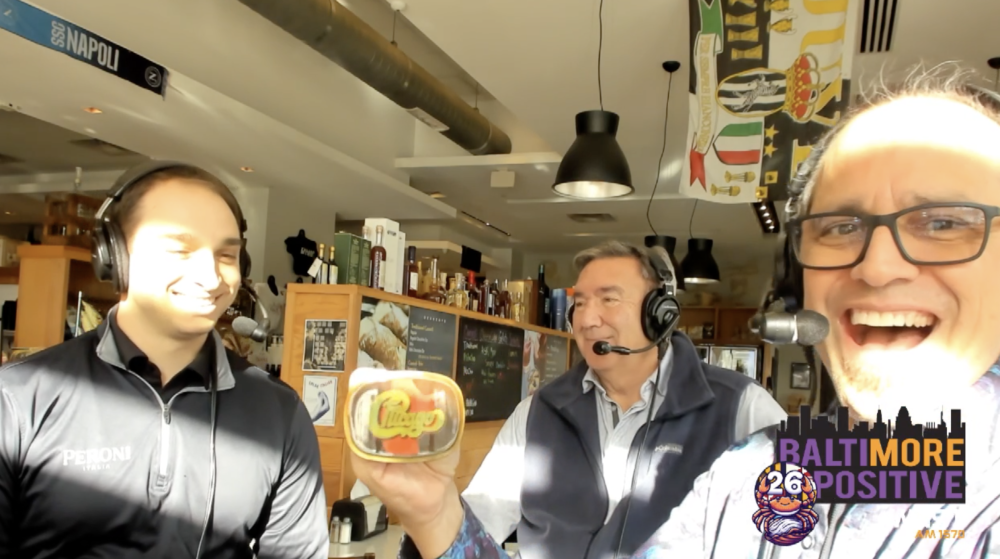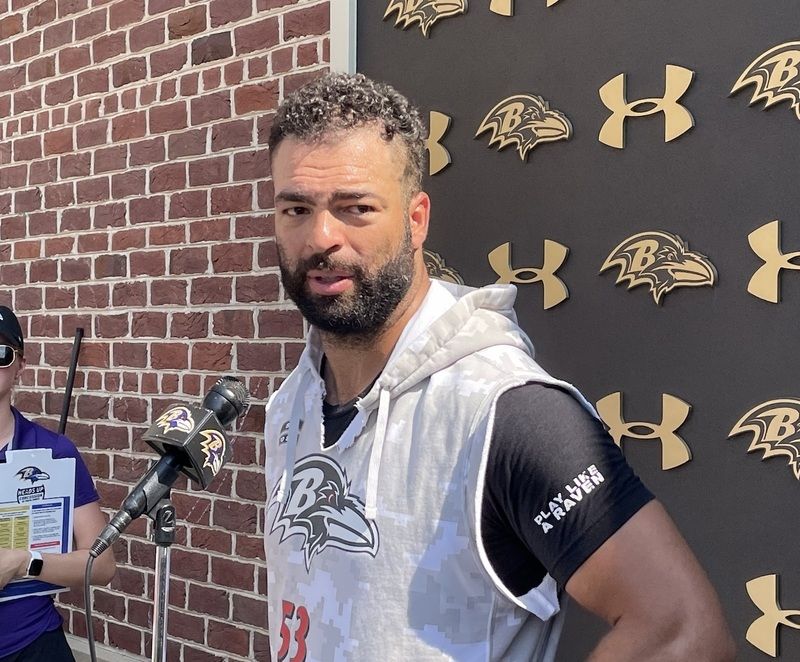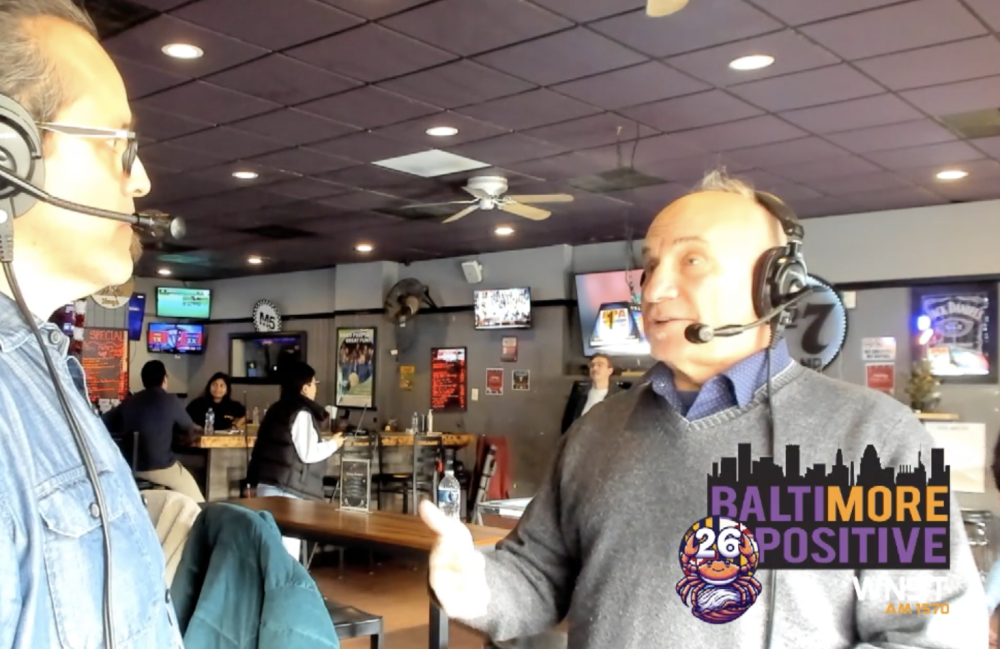“I think I’ll be involved in areas involving the business side as well as the baseball side,” DeWitt said. “Hopefully, I can be helpful on a consulting basis.”
Right away, Angelos was quick to talk about winning and the importance of a competitive club on the field.
“There has been some concern that we spent too much money [buying the franchise] and there will not be enough left to make this team a consistent winner,” Angelos said. “That is not the case. Those occasions arise when one player may make the difference. If that occasion arises, you have to be equal to it. But the best way to build a winning team is through [player] development. We’re going to have to balance out desire to get strong players and be careful not to do anything to harm the club for years to come.”
Angelos told The Sun that he expected to listen to advice from the Orioles board and executive committee but made it clear that he was the managing partner.
“These are people of diverse talents and personalities,” Angelos said of his new partners. “I would expect to use that. I won’t hesitate to take to them any matter of substance that deals with the club, its success and civic image.”
The newspaper reported that “the agreement states that Angelos, as managing general partner, will have ‘the exclusive right to manage the business’ of the team. That includes decisions involving the signing of players, negotiation of television and radio contracts and decisions regarding front-office personnel.”
Tom Clancy summed up his faith in Angelos thusly: “All business ultimately comes down to trust,” Clancy said. “Peter is an honorable guy. I take him seriously, and he takes me seriously.”
The third-largest investor on Team Angelos was Stephen A. Geppi, who as a kid from Little Italy in Baltimore dreamed of owning the Orioles and now had a stake. Geppi, who took his passion in comic books and became the industry’s largest distributor, also gave a vote of confidence to his new partner. “Even though he has the final say, he’ll listen to us,” Geppi said. “He’ll listen to what common sense dictates.”
Angelos initially invested $32 million for a 50% share. Clancy was in for 22% with a $12 million investment and Geppi put in almost $4 million for a 5% stake. DeWitt bought nearly $10 million to the table to help the group in the final hours and it was unclear how much stock he received.
Now that Angelos had full control of the team, he once again echoed his pre-purchase mantra – the one that made very little sense to anyone who realized that Oriole Park at Camden Yards was less than two years old and the team had a 30-year binding lease to play in it through 2021. He again reiterated that the stability of the team would be greater with a local owner.
“I predict that this club will never leave here,” Angelos said. “I further promise you that, as far as this ownership group is concerned, the club will never again be controlled by outside interests. The Orioles are such a part of this state that when you consider that somehow or other they might be controlled or some day taken away from us, that is simply unthinkable and something that we will never allow to happen.”
On August 3, 1993, just 24 hours removed from the biggest victory of their lives, Angelos joined DeWitt and Lucchino along with many of the other new partners for a celebratory evening of pennant-race Orioles baseball at Camden Yards. The Birds beat the Brewers 13-8 and won the second of what would be a eight-game winning streak that brought them within a ½ game of first place in mid August. The team’s starting pitching would wilt over the next two weeks as they lost eight in a row in Detroit, New York and Seattle, crushing postseason hopes.
On October 3, the Orioles finished the 1993 season at 85-77, good enough for third place.
On October 4, Peter G. Angelos assembled his bankers and took control of the Baltimore Orioles. Eli Jacobs received $173 million. Angelos took over operations of the franchise.
At 8:30 a.m. on October 5, Minnesota banker Joe Foss delivered a letter to Larry Lucchino relieving him of all duties as C.E.O. & president of the Orioles. Many thought that Angelos’ right hand man during the purchase, George Stamas, would be named the team’s president. Instead, Foss, who Angelos had just met in May and who had never worked outside of banking or inside of baseball, was named the team’s president.
Lucchino was all-too-familiar with mercurial owners who felt like they needed to manage their investment even if they didn’t understand or have the aptitude to run an incredibly unique business model with so many variables in Major League Baseball. When Eli Jacobs was recruited to be the Orioles owner five years earlier, it was Orioles partner and Lucchino friend, Sargent Shriver, who found him. Lucchino was told that Jacobs would be a passive investor and that Shriver would be the chairman in charge of all key decisions. As the 89% majority owner, Jacobs wanted to be the chairman despite not knowing anything – or caring to learn much – regarding the business of baseball.
Shriver wanted to be the long-term owner. He was a passionate Marylander, a guy who loved the Orioles. Lucchino thought he was getting a financier for the team and instead inherited an awkward, socially insulated “boss” who was clearly trying to make as much money as possible while he was privately and quietly going bankrupt.
Lucchino had just been in a tug-of-way with a neophyte, mercurial owner in Jacobs and didn’t want another strained relationship. At this point, coming into nearly $14 million with his 9% stake being sold to Angelos, he was cautious in examining the situation and his options amidst so many early pronouncements from Angelos, who clearly didn’t know much about the etiquette or the politics of Major League Baseball.
Lucchino went to dinner with Angelos several times during October 1993 trying to talk through a relationship moving forward with the Orioles. After all, he built the team as well as Camden Yards throughout the 1980s, owned and never wanted to sell his stock or shares and wanted to retain his well-earned position with the club all during the DeWitt dance with Jacobs and even through August and September as the team rolled into its third pennant race in five years.
Angelos offered him the No. 2 position but made it clear that he’d be making all of the key decisions. “Make no mistake, I was not going to carry on as president and C.E.O.,” Lucchino told The Sun. “Peter acquired the right to do that when he purchased the club, and that’s the way it should be.”
Angelos was blunt about Lucchino’s options. “The reorganization of the front office was something that he had to accept as being necessary – intellectually and otherwise,” Angelos said. “Considering the success the Orioles have enjoyed in the past, he might not have felt that was necessary. I don’t argue with that, but those who acquired the club have a responsibility to assess the organization and move forward.”
On Oct. 29, 1993, Larry Lucchino announced his resignation from the Baltimore Orioles after 14 years with the club.
“There was a sense that this was the time to move on,” Lucchino said. “We have accomplished many things. It’s time for Peter Angelos and his group to run this team as they would like and to succeed on their own.”
Lucchino added: “I wish we had won it all. That is a regret. That will be a goal if I ever am successful somewhere else.”
A year later, Larry Lucchino would go on to become a partner in finding Texas businessman John Moores to buy the San Diego Padres, leading them to a World Series in 1998. After getting Petco Park built in the Gaslamp District in 2001, his second major stadium design and follow through after Camden Yards, Lucchino left to form a partnership with John Henry in Boston. Lucchino has been the C.E.O. & president of the Red Sox since 2001 and has led the organization to three World Series rings: 2004, 2007 and 2013. Lucchino is the only man on the planet with a Final Four ring (he played at Princton with Bill Bradley in 1965), a Super Bowl ring (Redskins 1983), and four World Series rings (three in Boston plus Orioles in 1983). Lucchino also beat cancer – twice!



























